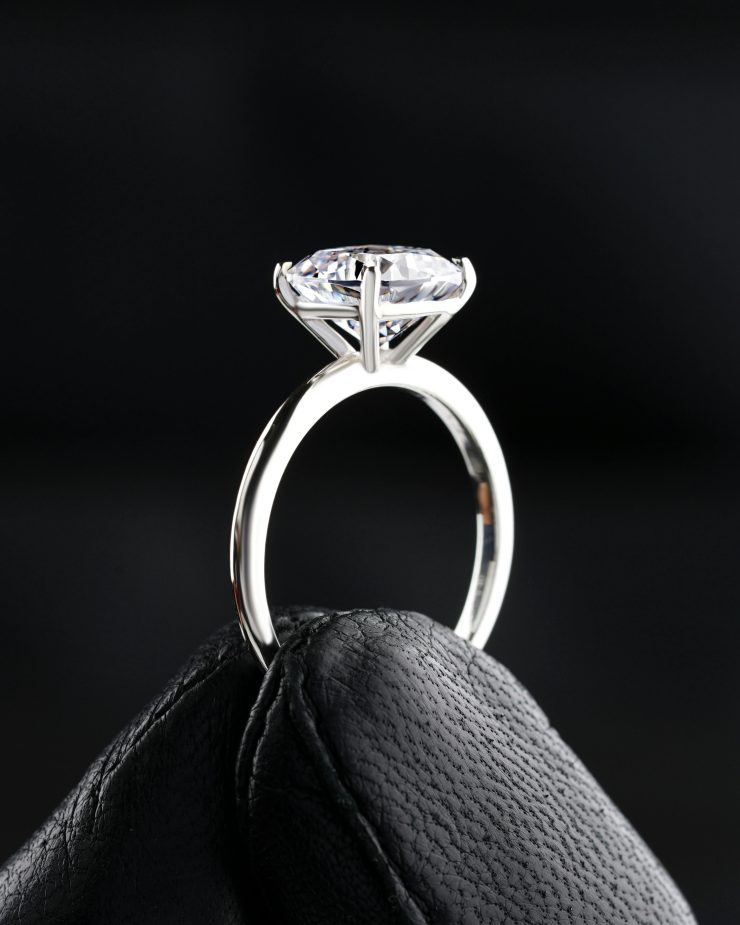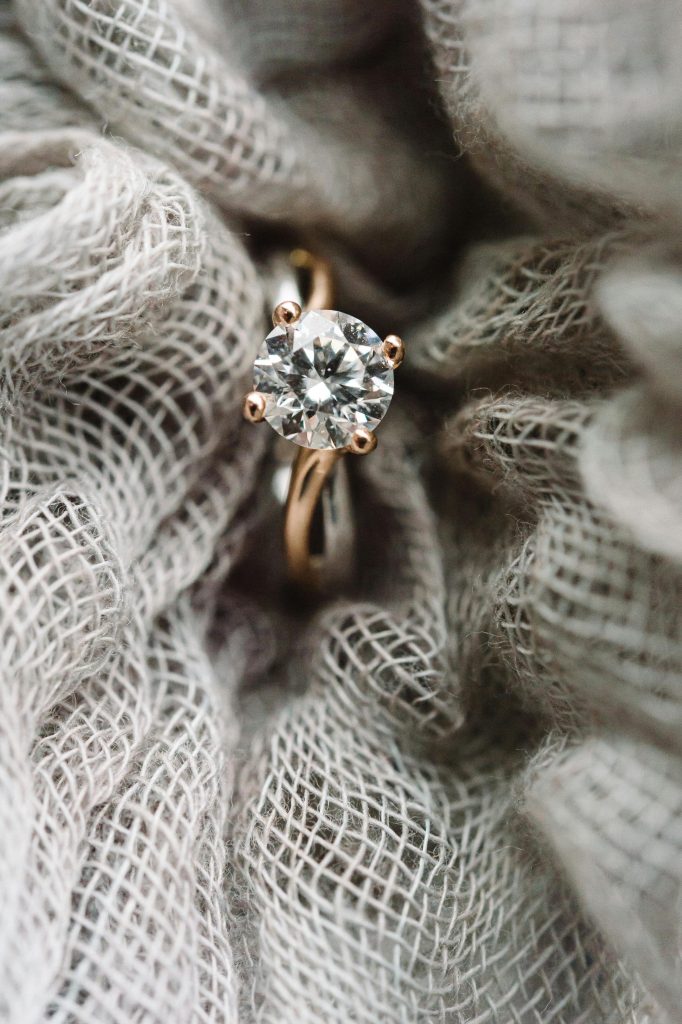Understanding the Physical Properties of Lab-Grown Diamonds
Lab-grown diamonds are chemically, physically, and optically identical to natural diamonds. They are made of pure carbon atoms arranged in a crystalline structure and possess the same hardness rating of 10 on the Mohs scale. This high hardness makes them extremely scratch-resistant, which contributes to their durability in daily wear. However, despite their toughness, lab-grown diamonds are not completely invulnerable. They can still be chipped or fractured if subjected to strong impact or mishandled during cleaning. Understanding their physical properties helps guide the correct maintenance approach. Unlike softer gemstones that require more delicate treatment, lab-grown diamonds can handle more robust care routines. Still, the mounting, setting, and surrounding materials (like gold, platinum, or other stones) may vary in durability and require different levels of maintenance attention. Knowing the structure of both the diamond and its setting is essential before establishing a cleaning or care routine. This foundational knowledge serves as the first step toward preserving the brilliance and structural integrity of your lab-grown diamond jewelry.

Daily Habits to Protect Your Lab-Grown Diamonds
One of the most effective strategies for maintaining the brilliance of lab-grown diamonds is developing good daily habits. Although they are resilient, it is advisable to remove your diamond jewelry before engaging in activities that involve high contact or exposure to potentially damaging substances. This includes sports, gardening, household cleaning, and even showering. Substances like chlorine, bleach, hairspray, lotions, and perfumes can accumulate on the diamond’s surface or tarnish the metal setting, dulling the stone’s appearance over time. Creating a consistent routine of putting on your jewelry last when dressing and taking it off first when undressing can prevent unnecessary exposure to contaminants. Additionally, storing your diamond pieces separately in a soft-lined jewelry box or in individual pouches prevents them from scratching other softer stones or being scratched by other hard materials. Establishing mindful handling habits reduces the frequency of professional maintenance needs and helps ensure that your lab-grown diamonds maintain their luster and clarity over extended periods.
The Importance of Regular Cleaning and Best Methods to Use
Cleaning lab-grown diamonds regularly is crucial to preserving their optical brilliance. Over time, natural skin oils, environmental dust, and cosmetic residues form a film that dulls the surface of the diamond, diminishing its sparkle. Fortunately, due to their hardness and resistance to most chemicals, lab-grown diamonds can be cleaned relatively easily at home using a gentle solution. A recommended cleaning method involves soaking the diamond jewelry in a mixture of warm water and mild dish soap for about 15–20 minutes, followed by gently scrubbing with a soft-bristle toothbrush. This removes residue from hard-to-reach crevices, especially around the prongs or bezel setting. Rinse thoroughly with warm water and dry with a lint-free cloth. Ultrasonic cleaners can also be used, although one must exercise caution if the jewelry contains other gemstones or fragile settings that might be affected by vibrations. Steam cleaners are another safe option for lab-grown diamonds but, again, only if the setting can withstand the pressure. Avoid using toothpaste, harsh detergents, or abrasive cleaning tools, as these may scratch the metal or cause unintended damage. Incorporating a monthly cleaning schedule at home, in conjunction with occasional professional polishing, can help your diamonds look pristine year-round.
When to Seek Professional Maintenance and Inspection
While regular at-home cleaning goes a long way, professional inspections and maintenance are essential for the long-term health of your lab-grown diamond jewelry. Jewelers have specialized tools that allow them to inspect the prongs, bezels, and other settings that secure the diamond in place. Over time, settings can loosen due to everyday wear, increasing the risk of the diamond falling out and becoming lost. A jeweler can tighten the setting, re-tip worn prongs, and polish the metal to restore the piece to near-original condition. Additionally, professionals can detect microscopic damage or chips that might not be visible to the naked eye but could worsen if left untreated. It is generally recommended to take your jewelry for professional inspection once or twice a year, even if no visible issues are present. For high-value pieces or those worn daily, biannual inspections may be more appropriate. This regular attention not only ensures the structural security of your jewelry but also prolongs its aesthetic appeal. Many jewelers offer complimentary or affordable check-up services, particularly if the piece was purchased through them, making professional care an accessible and worthwhile part of your maintenance routine.
Caring for Different Jewelry Settings and Styles
Different types of settings—such as solitaire, halo, pavé, or channel—require varied care strategies. For instance, pavé settings, which feature small diamonds set closely together with minimal metal visibility, are more susceptible to loosening stones due to their delicate structure. These require gentle cleaning methods and more frequent professional checks. In contrast, bezel settings, which completely encase the diamond in metal, offer more protection and are less prone to snagging or loosening. However, they can also trap debris more easily, necessitating a thorough yet careful cleaning approach. Earrings, bracelets, and rings experience different types of exposure. Rings, particularly engagement and wedding rings, are the most prone to knocks and dirt accumulation because they are worn constantly and come into contact with many surfaces. Stud earrings, although less exposed, often collect oils and dead skin behind the ear. Each style of jewelry experiences wear in distinct ways, and understanding this can guide your frequency and method of care. By adapting your maintenance practices based on the specific setting and use pattern, you can ensure that your lab-grown diamonds remain secure, clean, and stunning across all your jewelry pieces.

Storage Best Practices to Prevent Damage and Dulling
Proper storage plays a crucial role in preserving the beauty and longevity of lab-grown diamond jewelry. Even though diamonds are incredibly hard, they can still damage other jewelry pieces if stored improperly. For this reason, diamonds should never be tossed into a jewelry box with other items, especially softer gemstones or pieces with delicate metalwork. The ideal storage solution is a fabric-lined compartmentalized jewelry box or soft individual pouches that prevent items from touching each other. Anti-tarnish materials or strips can be added if the setting is made of silver or lower-karat gold, which are prone to oxidization. Additionally, avoiding exposure to excessive heat or humidity can protect both the metal and the diamond’s luster. Jewelry organizers that hang or display pieces may look attractive, but they offer limited protection from dust and accidental knocks. For valuable or heirloom pieces, consider storing them in a fireproof safe with climate control. By implementing intentional storage strategies, you not only maintain the physical integrity of the diamond but also reduce the frequency of professional maintenance needed in the future.
The Role of Certification and Insurability in Long-Term Care
Although lab-grown diamonds are often more affordable than their natural counterparts, they still represent a significant investment, particularly in larger carat weights or custom-designed pieces. Obtaining proper certification from a reputable gemological laboratory—such as the IGI (International Gemological Institute) or GIA (Gemological Institute of America)—can be essential in managing and caring for your diamond. Certification provides detailed information about the stone’s characteristics, such as cut, color, clarity, and carat weight, and can serve as a reference point for maintenance or resale. In addition, certified documentation can make it easier to insure the jewelry item, which is another critical aspect of long-term care. Jewelry insurance policies typically cover theft, loss, or major damage, but most require an official appraisal or certificate. If your diamond requires replacement due to loss or damage, having certification ensures that you can obtain a piece of equivalent value and quality. Regularly updating your appraisal value—especially if the diamond market fluctuates—is also part of responsible diamond ownership. Thus, documentation not only supports care efforts but also ensures peace of mind.
Understanding Environmental Factors That Affect Diamond Jewelry
Although lab-grown diamonds are resilient, environmental factors can influence their long-term appearance and condition. Exposure to certain chemicals and harsh environments may not degrade the diamond itself but can affect the metal settings and cause residues to accumulate, reducing optical brilliance. For example, excessive exposure to saltwater can erode some metals, particularly white gold that hasn’t been recently rhodium-plated. Similarly, constant exposure to household cleaning agents or pool chemicals can cause microscopic etching or dulling on the mounting’s surface. Additionally, environmental pollutants and even body sweat can interact with cosmetics or lotions, leading to the formation of films over the diamond’s surface. These films, if left untreated, can obscure light reflection and reduce brilliance. Jewelry worn in urban areas might require more frequent cleaning due to airborne pollutants and grime, whereas those in coastal areas might need extra care to manage salt exposure. Awareness of your local environment, and how it interacts with your lifestyle, helps determine the optimal frequency and methods for cleaning and maintenance.
Caring for Lab-Grown Diamonds Over Generations
Lab-grown diamonds, like their natural counterparts, are built to last a lifetime and can easily become family heirlooms passed from one generation to the next. To ensure their enduring beauty and value, it is important to approach their care with a long-term perspective. Over time, family-owned jewelry may undergo remounting, resizing, or redesigning. These processes must be performed by experienced jewelers to prevent compromising the diamond or setting integrity. Older pieces should also be re-evaluated periodically for metal fatigue, loose prongs, or wear in the band or chain. If a piece is to be passed down, providing accompanying documentation such as certification, appraisal records, and maintenance logs can help the new owner continue appropriate care. Educational guidance on cleaning, storage, and safe wear should also be conveyed. Taking these proactive steps helps preserve not only the physical diamond but also the emotional and symbolic value it carries. Whether given as a gift, inherited, or purchased for personal milestones, lab-grown diamonds benefit from thoughtful and consistent care to remain radiant for decades to come.